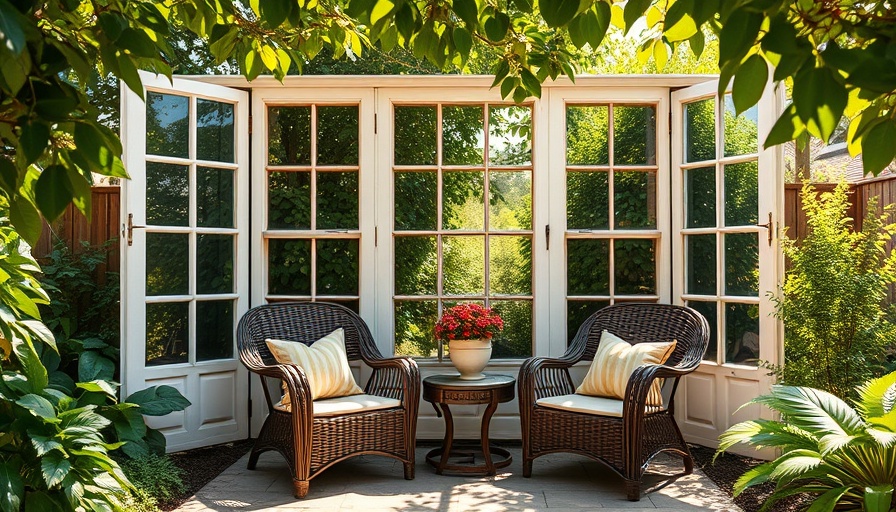
Transform Your Outdoor Space with Ingenious Privacy Solutions
Creating a private sanctuary in your backyard is a common desire among homeowners seeking tranquility amidst the hustle and bustle of daily life. The good news is that this doesn't have to come at a hefty price tag or require professional installation. With just a touch of creativity and some DIY skills, you too can build stylish and functional privacy screens that not only block out prying eyes but also enhance the overall aesthetics of your outdoor space. Here are some innovative DIY privacy screen ideas to inspire your next backyard project.
1. Vertical Planter Walls: A Green Retreath
Vertical planter walls are an excellent way to add privacy while introducing more greenery into your garden. By building a wooden or metal frame and attaching planter boxes, you can create a lush barrier with climbing plants like ivy or jasmine. These not only provide a beautiful backdrop but also encourage biodiversity by attracting pollinators.
2. Bamboo Screens: Nature's Privacy Wall
Bamboo has become a popular choice for privacy screens due to its rapid growth and dense coverage. Creating a bamboo screen involves tying together bamboo poles for a lightweight yet effective barrier. For a living option, consider planting bamboo directly in your garden—it will grow quickly and provide a serene, natural-facing wall.
3. Upcycled Doors: Eco-Friendly Aesthetics
Repurposing old doors or shutters not only gives your outdoor area a unique twist but is also an environmentally friendly option. Whether painted in vibrant hues or stained to match your landscape, these materials can be transformed into stunning privacy walls that tell a story and showcase your personal style.
4. Lattice Panels: Nature Meets Structure
Installing lattice panels is a great DIY project that allows for personalization and creativity. They can be combined with fast-growing vines like clematis or morning glories to create a living screen. As these plants grow, they form a beautifully intricate and effective natural barrier.
5. DIY Outdoor Curtains: Elegance Meets Function
For those who desire a bit of whimsy and elegance, hanging outdoor curtains can instantly elevate your backyard’s style. Use weatherproof fabrics in light, airy colors hung from a pergola or tension rods for added privacy that doesn't sacrifice light.
6. Pallet Walls: Rustic Charm
Wooden pallets can be creatively arranged to create rustic privacy walls. Stack and secure them vertically, enhancing the design with small planters or decorative elements like string lights. This affordable option works well in casual settings and adds warmth to your outdoor space.
7. Hanging Plant Walls: Maximizing Space
If you're short on space but long on greenery, consider a hanging plant wall. Suspend potted plants at different heights to create a verdant screen. Dense foliage plants like ferns or pothos are excellent choices for adding both beauty and privacy.
8. Eco-Friendly Options: Reed & Willow Panels
For an organic touch, attaching natural reed or willow screening rolls to existing fences or posts can create an attractive barrier. These lightweight, eco-friendly options blend seamlessly with any garden setting, proving that privacy can be achieved responsibly.
9. Modern Flair with Corrugated Metal Screens
If you’re after a more contemporary look, corrugated metal panels make for stylish privacy screens. When paired with greenery, these metal screens create a balanced aesthetic that enhances any modern garden design.
10. Artistic Touch: Decorative Metal Panels
Laser-cut metal screens can serve as a dual function—acting both as an artistic feature and an effective privacy solution. Their intricate designs can add character and intrigue to your space, making them a conversation starter among guests.
Embracing Nature Through Personalization
Beyond mere aesthetics, designing privacy screens allows homeowners to connect more intimately with their outdoor spaces. Each project, whether it is the installation of vertical gardens or the construction of an artistic metal screen, reflects personal style and eco-conscious choices. Investing time in DIY projects fosters creativity while enhancing property value, offering a remarkable return on investment.
A Future of Collaborative Private Spaces
As trends evolve, the design of outdoor living spaces continues to meld with sustainability and creativity. Future innovations may introduce even more environmentally friendly materials and ubiquitous technology, revolutionizing how we think about private outdoor environments. Imagine integrating smart garden systems with self-sustaining features—where privacy does not compromise nature.
Impact of Privacy on Well-Being
Creating private outdoor sanctuaries plays a significant role in mental well-being. This retreat allows individuals to unwind, recharge, and enjoy moments of solitude or intimacy with loved ones without distractions. The trend towards creating these personal gardens signifies a broader societal awareness of mental health and the importance of indulgent, aesthetically pleasing spaces where one can escape life's stresses.
So, whether you're looking to block out unwanted views or simply wish to enhance the appeal of your backyard, consider undertaking a DIY project. Not only will you craft a private haven, but you'll also glean the satisfaction that comes from creating something meaningful with your own hands. With a myriad of ideas at your disposal, this allows homeowners not only to choose a style but tailor solutions that suit their personal landscape. Explore the potential of your outdoor space today!
 Add Row
Add Row  Add
Add 




 Add Row
Add Row  Add
Add 

Write A Comment